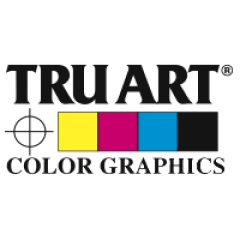When it comes to print projects, paper isn’t just a medium—it’s an integral part of the message. The right paper can enhance your design, amplify your branding, and create an unforgettable tactile experience. From weight and texture to special finishes like embossing and foil stamping, the choices you make can transform a simple print piece into something extraordinary.
At Tru Art Color Graphics, we’re here to help you navigate these options with confidence. Let’s dive into what you need to know to choose the perfect paper for your next project.
Understanding Paper Weight and Thickness
Paper weight refers to its heaviness and is often expressed in pounds (lbs) or grams per square meter (GSM). These measurements indicate the thickness and durability of the paper.
- Lightweight Paper: Ideal for projects like flyers and newsletters, where foldability and easy handling are priorities.
- Medium Weight: Perfect for brochures and booklets, striking a balance between durability and flexibility.
- Heavyweight Paper: Best for business cards, postcards, and other materials that need to convey sturdiness and quality.
Tip: Heavier stocks exude professionalism and luxury, making them a great choice for high-end branding materials.
Coated vs. Uncoated Paper: What’s the Difference?
The finish of your paper—coated or uncoated—dramatically influences the look and feel of your print piece.
- Coated Paper: A slick, smooth finish enhances the vibrancy of colors and the sharpness of details. Glossy coatings add a polished, eye-catching sheen, while matte coatings provide a softer, understated elegance. This type of paper is ideal for projects that rely on high-quality images or bold graphics.
- Uncoated Paper: With a natural, porous texture, uncoated paper absorbs ink more deeply, giving colors a muted, softer look. It’s perfect for materials like stationery, journals, or anything that needs a warm, approachable aesthetic.
Tip: If your project requires writing space, such as a form or a note card, uncoated paper is the way to go.
Texture: A Tactile Experience
Paper texture adds a new layer of engagement to your print piece. Smooth, flat papers are great for modern, clean designs, while textured options like linen, felt, or laid paper bring depth and sophistication.
For example, embossed or debossed textures—where elements are raised or recessed into the paper—can create a striking, tactile dimension that elevates logos or design elements. These effects are especially powerful for invitations, premium packaging, or certificates.
Tip: Ask for samples and feel the textures yourself. A hands-on approach is the best way to decide if a paper’s texture matches your brand’s message.
Special Finishes: Elevating Your Print
Beyond paper type, special finishes can take your print project to the next level. These techniques create visual and tactile interest, turning ordinary materials into extraordinary works of art.
Embossing and Debossing
- Embossing raises design elements above the paper’s surface, creating a 3D effect that’s elegant and eye-catching.
- Debossing presses elements into the paper, resulting in a recessed impression that adds subtle sophistication.
Both techniques add a tactile quality that invites your audience to interact with your piece.
Foil Stamping
A metallic or colored foil is pressed onto the paper using heat, creating a shiny, reflective surface. Foil stamping is perfect for highlighting logos, text, or patterns, giving your design an upscale and luxurious feel.
Spot UV Coating
This involves applying a glossy coating to specific areas of your design, such as a logo or image, while leaving the rest of the paper matte. The contrast between glossy and matte finishes draws attention to key elements.
Die-Cutting
Die-cutting allows you to create custom shapes and designs in your paper, from intricate patterns to functional features like windows. This technique adds a unique, creative touch to business cards, invitations, or packaging.
How Ink Interacts with Different Papers
The type of paper you choose affects not only the visual appeal of your print but also how the ink performs:
- Coated Paper: Ink sits on the surface, creating vibrant, sharp colors and details. This makes coated paper the go-to choice for designs with high-resolution images or intricate patterns.
- Uncoated Paper: Ink absorbs into the surface, producing a softer, muted effect. This can be ideal for projects that require a more understated or classic look.
Tip: Always proof your design on your chosen paper type to ensure the final result meets your expectations.
Bringing It All Together
The combination of paper weight, texture, and finishes should align with the purpose and audience of your print piece. A heavy, textured paper with embossed lettering might be perfect for a formal invitation, while a glossy coated stock with spot UV accents could make a marketing brochure pop.
At Tru Art Color Graphics, we pride ourselves on understanding the art and science of print. With decades of experience, we can guide you through every step of the process, ensuring your paper choice and finishes bring your vision to life.
Ready to Elevate Your Print Project?
The right paper and finishes can transform your materials from functional to unforgettable. Whether you’re designing business cards, brochures, or specialty invitations, Tru Art Color Graphics has the expertise and resources to make your project stand out.
Contact us today to explore our wide range of paper options, special finishes, and custom printing solutions. Let’s create something extraordinary together.
By focusing on elements like weight, coating, texture, and special finishes, this guide gives you the tools to craft print materials that captivate and connect. Partner with Tru Art Color Graphics to turn your ideas into stunning realities.

